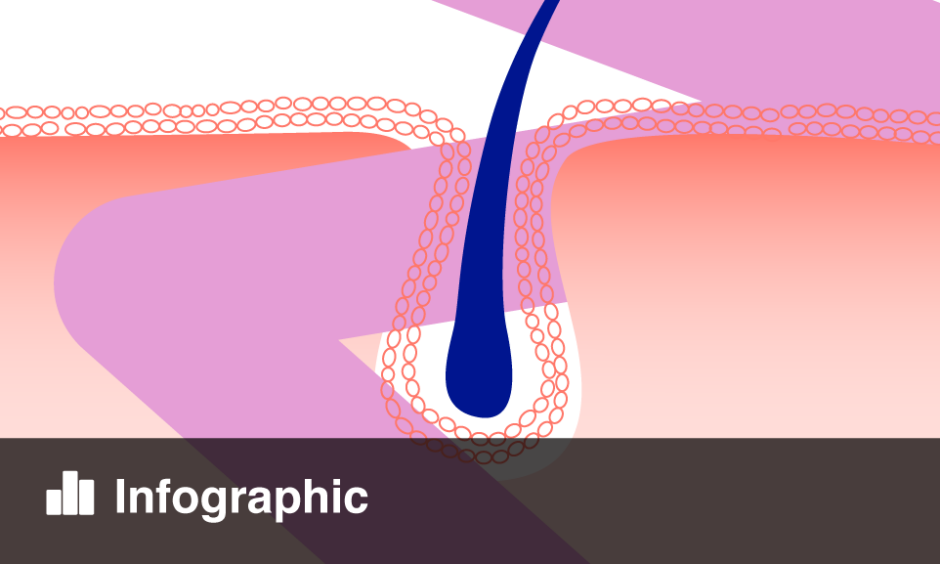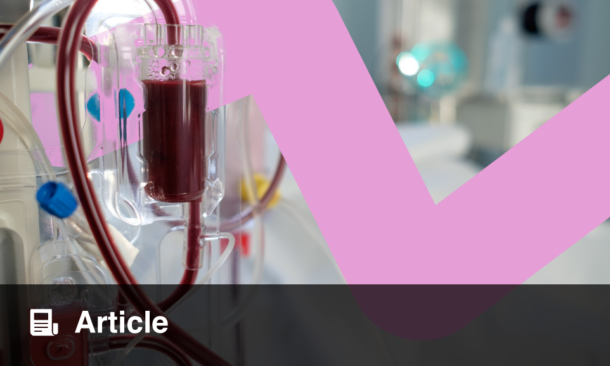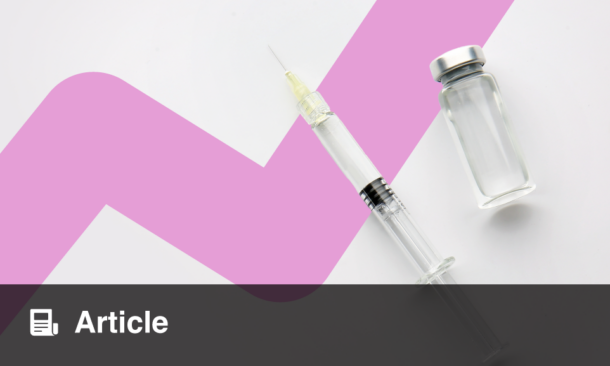In the sunny, coastal city of San Diego, California, USA, the American Academy of Dermatology (AAD) hosted the 2024 AAD Annual Meeting, bringing together the brightest minds in the dermatology space in the USA and Canada.
The number of attendees was close to 20,000, likely making the 2024 AAD Annual Meeting the largest dermatology meeting ever by attendance. The scientific program was alive with 339 sessions on dermatological topics ranging from hidradenitis suppurativa and atopic dermatitis, to clinical practice topics such as dermoscopy and bedside manner differences with patients. The Plenary Session provided attendees with updates from Academy leadership and the chance to learn from award-winning named lecturers and select guest speakers on current topics that impact dermatologists, including changes in healthcare concerns and changes in educational delivery tools.
The Chair’s welcome was delivered by Hensin Tsao, Harvard Medical School, Boston, Massachusetts, USA, who tantalized the audience of 13,000 collaborators with the promise of opportunities given at the Annual Meeting. The dermatology field is witnessing an unprecedented era of breakthroughs in therapies and technologies. These exciting and fundamental changes to its practice bring vast and complex challenges. Tsao encouraged the audience to rally together to support this revolution with collective wisdom: “Together we can accelerate the pace of innovation, share knowledge freely, and uplift our practice and to new heights.” He called on dermatologists to ignite and collaborate in a shared vision to heal, innovate, and to inspire using the Annual Meeting as a beacon of collaboration. Each year, the AAD Annual Meeting offers the invaluable experience of discussing and networking for new ideas to advance dermatological care and impact 300 million lives.
The first lecture in the Plenary Session, the ‘Clarence S. Livingood, MD Memorial Award and Lectureship: Photodermatology: Past, Present and Future’, was given by the award recipient, Henry W. Lim, Henry Ford Hospital, Detroit, Michigan, USA. Lim has served as the President of the AAD and several other notable bodies, and in 2020 was awarded the highest honor within the Academy, an Honorary Membership of the AAD. Lim presented his lecture on photodermatology, stating that this is an area of concern for him, and that if the discipline does not invest its time and resources into this research, there may be a risk of it slipping away.
The next person invited to the stage was Terrence A. Cronin Jr., Jackson Memorial Hospital, Melbourne, Florida, USA, for the President’s Address, ending his 1-year term as president of the organization. He reflected on his journey from a transformative year continuing to advance education and standards of care and providing healthcare for millions of Americans and beyond. He paid respect to the dedicated members and leaders of the Academy, commending the strong educational program and the cohesiveness of the many disciplines represented by the AAD, calling on members to work to preserve these assets, especially the focus on education to distinguish the AAD from other organizations.
Brian J. Druker, OHSU Knight Cancer Institute, Portland, Oregon, USA, was awarded the ‘Lila and Murray Gruber Memorial Cancer Research Award and Lectureship: Imatinib as a Paradigm of Targeted Cancer Therapies’. He shared highlights on the breakthrough research of the first products that targeted cancer specifically without harming normal cells. Having been a part of this breakthrough, he shared what made this possible and how this could be applied to many other diseases.
In what he deemed as the most important of his career, the President-Elect Address was delivered by Seemal R. Desai, University of Texas Southwestern Medical Center, Dallas, USA, in his inaugural speech as incoming president. As he picked up the baton for his dream role from his esteemed colleague Cronin Jr., he shared his message and his passion with the AAD members: “While there may be a very difficult road ahead, there is no barrier, no challenge, no obstacle that we cannot surmount together when we work together as a united group of this nation’s brightest and most talented physicians.”
The ‘Marion B. Sulzberger, MD Memorial Award and Lectureship’, established in 1983, was awarded to Brian S. Kim, Icahn School of Medicine at Mount Sinai, New York City, USA. The lecture, ‘Sensing Inflammation at the Barrier’, focused on mechanisms that underlie skin inflammation and the sensation of itch as a fundamental broad model paradigm for neuro-immunology.
The final lecture within the session was the ‘John Kennedy Jr. MD Lifetime Achievement Award and Lectureship’. It was established in 2021 to recognize outstanding dermatologists, who throughout their career have been committed to improving the treatment of patients from underserved populations, including those scared of complications. The recipient of this award was Patricia Treadwell, Indiana University School of Medicine, Indianapolis, USA. She spoke about health equity in dermatology, and provided clarity and understanding on the role for individual dermatologists.
Finally, and remarkably, the Keynote Speaker for the meeting was William Shatner, the 93-year-old actor from Montréal, Québec, Canada, best known for his role in the Star Trek television series. He addressed the audience with an extraordinary account of his life, his acting career spanning seven decades, his diagnosis with Stage IV melanoma, and receiving surgical treatment followed by unspecified immunotherapy.
Read on for further coverage and late-breaking research from the 2024 AAD Annual Meeting.
Lutikizumab for the Treatment of Moderate-to-Severe Hidradenitis Suppurativa
LUTIKIZUMAB, a dual-variable-domain IL 1α/1β antagonist, can be used to treat patients with moderate-to-severe hidradenitis suppurativa (HS) who have failed anti-TNF therapy. However, the safety and efficacy has been seldom explored. Adults with a clinical diagnosis of HS who failed anti-TNF treatment, were recruited to a Phase II, mulitcenter, randomized, double-blind, placebo-controlled study to address this.
Patients were centrally randomized at baseline in a 1:1:1:1 ratio to one of four treatment groups, aiming for 40 patients in each treatment group. Group 1 received 300 mg lutikizumab every week, Group 2 received 300 mg every other week, Group 3 received 100 mg every other week, and Group 4 received a placebo every week. Across all treatment groups, the drug was administered at baseline and Weeks 1–15, with the final efficacy being assessed at Week 16.
Overall, 153 patients were randomized across 54 sites, and the majority (70.6%) had severe baseline Hurley Stage 3 disease. While the response rate for Group 3 was 27.0%, both Group 2 (59.5%) and Group 1 (48.7%) showed greater response rates over the placebo group (35.0%) in the primary endpoint at Week 16 of a Hidradenitis Suppurativa Clinical Response (HiSCR) of 50. Further results indicated a posterior probability of observing a positive treatment difference versus placebo of 98.5% and 89.3% in Groups 2 and 1, respectively. At the secondary endpoint, a higher proportion of participants achieved a skin pain response (NRS30) of NRS ≥3 in Group 2 and 1 compared to the placebo. Importantly, all doses were safe and well-tolerated.
Overall, lutikizumab 300 mg administered every week and 300 mg administered every other week showed positive results when compared to a placebo in patients with moderate-to-severe, hard-to-treat HS.
Injectable Polidocanol for Excess Submental Fat Reduction
CURRENT treatment modalities for excess submental adiposity, a common esthetic concern, may have poor efficacy, prolonged recovery, unpredictable results, and adverse events. Novel research, presented at the AAD 2024 Annual Meeting, shed light on the safety and efficacy of injectable polidocanol for submental fat reduction.
The team conducted a Phase IIB clinical trial to evaluate the safety and efficacy of injectable polidocanol, a non-ionic detergent and adipolytic. A total of 51 subjects were enrolled (intent-to-treat population) and assigned to four dose cohorts, where they were administered either 2.0%, 3.0%, 4.5% polidocanol, or vehicle, up to six times, 4 weeks apart. Study endpoints included Clinician Submental Fat Score (CSFS) and Patient Submental Fat Score (PSFS) on a 0–4 point scale. The team also obtained local skin reactions, safety labs, and electrocardiograms from patients. Forty subjects completed all assessments and at least four treatments (completer population).
Out of the intent-to-treat patients in the 3.0% and 4.5% dose groups, 62% and 54% demonstrated a 2-Grade improvement in the CSFS/PSFS U.S Food and Drug Administration (FDA) composite endpoint (P<0.01), respectively. In the complete population, 80% of the 3.0% and 4.5% dose groups achieved a 2-Grade improvement in FDA composite endpoint (P<0.01). Polidocanol also demonstrated a rapid onset of efficacy, with an average of 1-Grade improvement after only two treatments. Furthermore, a total of 98% of local skin reactions were graded as 0 (absent) or 1 (mild), with the majority being classed as Grade 0.
Overall, the team noted that polidocanol showed a fourfold improvement in Grade 2 response relative to published data on deoxycholate, the only FDA-approved injectable drug for submental fat reduction. Polidocanol also demonstrated an improved safety profile compared to deoxycholate, with significantly lower frequency of adverse events, including pain, bruising, and edema. The study supports a superior efficacy and tolerability of injectable polidocanol compared to current products.
Comparing Office and Home Phototherapy for Psoriasis
HOME phototherapy may be the more effective method for treating psoriasis in the USA, according to new research presented at the AAD 2024 Annual Meeting. Previous studies have demonstrated that home phototherapy is less costly and often preferred by patients, compared to office phototherapy, which is cost-effective but difficult to access; however, there are limited clinical data to support this.
In order to compare the efficacy of the two treatments, researchers carried out a randomized trial at 42 dermatology practices, involving a total of 783 patients (mean age: 48 years; 53% female; 11% on systemic treatment) with plaque or guttate psoriasis. Of this group, 393 patients were enrolled in home phototherapy, and 390 in office phototherapy. Co-primary endpoints of Physician Global Assessment (PGA) clear/almost clear and dermatology life quality index (DLQI) ≤5 (mild) were assessed at Week 12. Enrollment was stratified by skin phototype (SPT; 350 patients in SPT I/II and III/IV yielding 80% power to establish subgroup non-inferiority).
When analyzing the results, the team found that, at Week 12, 33% of home and 26% of office patients achieved clear/almost clear (p=0.027) and 54% and 34% achieved DLQI ≤5 (p<0.001). Home phototherapy was further determined to be non-inferior for PGA and DLQI (p<0.001) for all skin types, the largest difference being clear/almost clear in SPT V/VI. Both home and office treatments were generally well tolerated, and no patients discontinued as the result of adverse events.
The team concluded that home phototherapy is more effective overall in real world practice than office phototherapy, due to difficulties accessing the latter treatment. As a result, they recommend that home phototherapy should be considered a first-line treatment option for plaque or guttate psoriasis.
Treatment for Alopecia Areata Shows Promise in Children and Adolescents
IN a stride towards combating alopecia areata (AA), recent approvals of two JAK-inhibitors have marked an advancement in treatment options. However, these medications are designated for severe cases only, leaving a treatment gap for patients with moderate AA. Addressing this need, Coacillium® (Legacy Healthcare, Skokie, Illinois, USA) cutaneous solution has demonstrated a favorable benefit-risk profile for evaluation in both severe and moderate cases of AA, including in children.
The landmark RAAINBOW trial, a multinational, randomized, placebo-controlled, double-blind, Phase II–III study was conducted. This trial targeted patients aged 2–18 years, with AA severity assessed through SALT (Severity of Alopecia Tool) scores ranging from 25–50 (moderate) and 50–95 (severe). The treatment regimen spanned 24 weeks, followed by a 24-week treatment-free observation period to assess relapse post-discontinuation; concomitant treatments for AA were prohibited throughout the trial.
Of the 62 eligible patients, 42 received Coacillium, while 20 received a placebo. After 24 weeks, patients treated with Coacillium exhibited a substantial mean change in SALT score of +22.87%, compared to -8.00% in the placebo group, and a treatment effect of 30.87% (p<0.0001). Improvements in quality of life metrics were observed to be positively associated with treatment efficacy.
Following treatment discontinuation, 82% of Coacillium recipients continued to experience hair growth, with their mean SALT score decreasing from 43.6 to 29.0. By Week 48, 47% of Coacillium-treated patients achieved SALT scores of ≤20, compared with 9.1% observed in the placebo cohort (p=0.0031). Adverse events in the Coacillium group were predominantly mild or moderate, with one case of severe transient eczema being the only serious incident reported.
Coacillium demonstrated sustained remission without the need for ongoing treatment, making it a promising option for children and adolescents with moderate-to-severe AA.
Is Beremagene Geperpavec Safe?
RECENT data, presented at the AAD 2024 Annual Meeting, support the benefit-risk profile of beremagene geperpavec (B-VEC) for long-term treatment in patients with dystrophic epidermolysis bullosa, a rare genetic fragility disorder caused by mutations in COL7A1. This open-label extension study assessed the safety and tolerability of B-VEC, a herpex simplex virus 1-based gene therapy vector which topically delivers COL7A1 to patients. A Phase III study showed that this treatment significantly improved complete wound healing at 6 months compared to placebo, in 31 participants; however, there were no long-term data available yet.
This open-label extension study included 47 subjects, 24 of whom participated in the previous Phase III trial, and 23 of whom were treatment-naïve. These patients were between 6 months–45 years old (mean: 16.5 years), and received a median of 565 days of treatment, up to 794 days.
Adverse events (AE) were reported by 35 subjects (75.5%). The majority of these were mild or moderate; however, 14 participants experienced serious AEs, which were not considered related to treatment. No AEs led to treatment discontinuation, and at the last visit, high levels of satisfaction were reported. Furthermore, there was an improvement in quality of life measures over time. High closure rates were maintained over time in rollover subjects and wounds that were treated with B-VEC during the Phase III trial (61.1–89.5%; Months 3–12). The open-extension study did not detect any new safety signals, supporting the benefit-risk profile of the treatment in the long term.
Efficacy of TYK2 Inhibitors for Moderate-to-Severe Plaque Psoriasis
LATE-BREAKING research on the efficacy and safety of ESK-001 was presented at the AAD Annual Meeting 2024. ESK-001 is an oral, highly selective tyrosine kinase 2 (TYK2) inhibitor, which blocks the TYK2 protein.
Lead study author Kim Papp, Division of Dermatology, Department of Medicine, University of Toronto, Ontario, Canada, and colleagues, led the Phase II randomized, double-blinded, placebo-controlled study, STRIDE. Adults with moderate-to-severe plaque psoriasis were included, who scored ≥12 on the Psoriasis Area Severity Index (PASI), ≥3 on the Static Physicians’ Global Assessment (sPGA), or ≥10% on the Body Surface Area (BSA) assessment. The study created five arms, giving each a dose of ESK-001 between 10 mg daily to 40 mg twice daily, and comparing these to placebo. Researchers set the primary endpoint as PASI-75 at Week 12.
The key primary and secondary endpoints were met (p<0.00001) in the top three dose arms, where all patients experienced a dose-dependent response. In the arm who were given the highest ESK-001 dose (40 mg twice daily), 64% achieved PASI-75, 39% PASI-90, and 15% PASI-100 (placebo: 0%). In this arm, 59% of patients also achieved sPGA 0/1, and 23% sPGA-0, both at Week 12 (placebo: 8%).
Treatment-emergent adverse events (AE) were mostly mild-to-moderate, and were similar across all study arms; the majority of these were upper respiratory tract infections, nasopharyngitis, and headache. The drug discontinuation rate for AE was <3%, with no serious or JAK-associated AEs, or deaths reported. No clinically significant laboratory trends were detected.
Currently, an open-label extension study is being conducted to evaluate those patients who completed the STRIDE study. Papp and team believe that their study “demonstrated clear, dose-dependent effects,” and that these “supportive open-label extension findings indicate [that] best-in-class efficacy can be achieved safely with longer exposure.”
Brepocitinib in Patients with Cicatricial Alopecia
CICATRICIAL alopecias (CA) are progressive conditions causing scarring hair loss, with limited effective treatments available, despite significant impairment to quality of life. Activation of the Type 1 T helper (Th1)/JAK pathway in CA provides the rationale for a Phase IIA, double-blind, placebo-controlled trial investigating the inhibition of tyrosine kinase 2 (TYK2)/JAK1 by brepocitinib.
Patients with lichen planopilaris (LPP; n=16), frontal fibrosing alopecia (FFA; n=9), and central centrifugal cicatricial alopecia (CCCA; n=24) were randomly assigned in a 3:1 ratio to receive either 45 mg brepocitinib or placebo daily for 24 weeks, followed by an open-label 24-week period with brepocitinib. Safety assessments and changes in Th1 biomarkers at 24 weeks were co-primary endpoints. Scalp biopsies were collected from non-lesional and/or lesional skin at baseline, 24 weeks, and 48 weeks for analysis using RT-PCR.
Brepocitinib treatment resulted in significant improvements in the LPP activity index (LPPAI), with a 50.7% improvement at 24 weeks and a 76.2% improvement at 48 weeks from baseline (p<0.01). Erythema reduction and improvements in patient-reported outcomes such as pruritus and pain were observed by 48 weeks (p<0.05). Frontal fibrosing alopecia severity index (FFASI) and CCCA change in hair loss grade (CHLG) improved by 32.1% and 37.1%, respectively, at 48 weeks compared to baseline (p<0.1). Placebo-treated patients exhibited numerical worsening by 24 weeks. No new safety concerns were identified through 52 weeks. Biomarker analysis demonstrated significant downregulation of inflammatory markers, including Th1, Th2, and JAK3, in FFA, LPP, and/or CCCA (p<0.05).
Overall, brepocitinib treatment led to significant clinical improvements in CA and demonstrated promising effects on biomarkers, suggesting the therapeutic potential of JAK inhibition in these conditions.
Efficacy and Safety of Remibrutinib in Moderate-to-Severe Hidradenitis Suppurativa
HIDRADENITIS suppurativa (HS) is a chronic inflammatory skin disease causing abscesses and scarring of the skin. A non-receptor kinase, called Bruton’s tyrosine kinase (BTK), functions in intracellular signalling, proliferation, and migration of B lymphocytes and myeloid cells. Due to its involvement in immune response, inhibition of B cells has been seen as a treatment option for conditions such as rheumatoid arthritis, multiple sclerosis, systemic lupus erythematosus, and most notably, HS.
Alexandra Boer Kimball, Beth Israel Deaconess Medical Center, Boston, Massachusetts, USA, and colleagues, conducted a randomized, double-blind, placebo-controlled, Phase II study, to investigate the effect of remibrutinib, an oral BTK inhibitor, as a treatment option for moderate-to-severe HS. The treatment was provided to subjects in varying doses: 25 mg (N=33), 100 mg (N=33), or placebo (N=11), twice daily for 16 weeks. Its effect was assessed against a simplified HiSCR rate (sHiSCR), consisting of a ≥50% reduction in abscess and inflammatory nodule count, with no increase in draining tunnels versus baseline.
Interestingly, at Week 16 remibrutinib exhibited greater sHiSCR (25 mg: 72.7%; probability: 0.999, and 100 mg: 48.5%; probability: 0.896), compared to placebo (34.7%). Responder rates at Week 16 were higher in the remibrutinib 25 mg and 100 mg treatment arms versus placebo (HiSCR: 69.7%, 48.5% versus 32.7%; HiSCR75: 42.4%, 27.3% versus 18.4%; HiSCR90: 36.4%, 15.2% versus 8.2%). Regarding adverse effects, remibrutinib was overall well tolerated with three serious AE events reported (N=1 per arm).
These findings show great promise for the potential use of remibrutinib as an inhibitor of BK tyrosine kinase, and thus treatment option for HS.
Efficacy of a Pan-JAK Inhibitor Cream in Patients with Chronic Hand Eczema
PHASE III, open-label extension, DELTA-3 trial results of pan-JAK inhibitor cream delgocitinib were presented at the AAD Annual Meeting 2024. Melinda Gooderham, Queen’s University, Kingston, Ontario, Canada, and team, checked the long-term safety and efficacy of delgocitinib cream in adults with chronic hand eczema (CHE).
The delgocitinib cream in patients with moderate-to-severe CHE was well tolerated and showed significant improvement in all efficacy endpoints in DELTA-1 and DELTA-2. Volunteers who completed their 16-week treatment period in DELTA-1 and DELTA-2 were moved to DELTA-3. In DELTA-3, based on the individual need, volunteers (N=801) were given 20 mg/g delgocitinib cream twice a day, for a period of 36 weeks. Volunteers with an Investigator’s Global Assessment for CHE (IGA-CHE) of 2 or above, received delgocitinib cream until they became clear or almost clear of symptoms (i.e., IGA-CHE 0/1 [clear/almost clear]). The number of treatment-emergent adverse events (TEAE) was the primary endpoint, and IGA-CHE 0/1 and improvement in Hand Eczema Severity Index of ≥75%/≥90% (HECSI-75/90) were the secondary endpoints. The Hand Eczema Symptom eDiary (HESD), captured worst severity of itch/pain reported by patients in the past 24 hours.
In DELTA-1 (N=325), DELTA-2 (N=313), and DELTA-3 (N=801), no safety concerns were noticed after the use of delgocitinib cream. COVID-19 and nasopharyngitis were the most frequently noticed TEAEs in DELTA-3.
In the DELTA-3 parent trial of delgocitinib cream, IGA-CHE 0/1, HECSI-75, HECSI-90, and ≥4-point itch/pain reduction showed improvement from 24.6%, 51.8%, 31.8%, and 50.6%/51.9%, respectively, at Week 0, to 30.0%, 58.6%, 36.6%, and 52.4%/55.4%, respectively, in 36 weeks. Similarly in parent trials, the vehicle cream showed improvement from 9.1%, 23.7%, 12.0%, and 26.3%/32.3%, respectively, at Week 0, to 29.5%, 51.5%, 35.7%, and 41.3%/43.3%, respectively, at 36 weeks.
No safety concerns were reported, and the efficacy improved in volunteers after using 20 mg/g delgocitinib cream, making it possible to use delgocitinib cream in patients with CHE for a longer term based on their needs.
Promoting Hair Growth by Activating Hair Follicle Stem Cells
PP405, a small molecule clinical candidate developed by Christina Weng, Baylor College of Medicine, Houston, Texas, USA, and team, promotes hair growth by activating the hair follicle stem cells (HFSC). The inhibition of pyruvate oxidation in past genetic and pharmacological studies in alopecic murine models showed lactate dehydrogenase (LDH) activity in hair follicles and that led to the stimulation of HFSC and hair growth.
Translational studies were conducted on human skin explants from facelift surgeries to determine the topical penetration, target engagement, and activation of HFSCs post-application of PP405. Punch biopsies, taken after 24 hours of single topical dose application, were embedded in optical coherence tomography (OCT), and frozen for conducting histology, immunostaining, and in situ LDH assays. Explant homogenates were also assayed for LDH activity.
In hair follicle stem cell niches, both telogen and anagen follicles, a dose-dependent LDH activity was noted. Topical doses of PP405 of 0.006% and 0.060% increased the activity of LDH in skin lysates by over 50% versus vehicle (p≤0.001). Twenty-four hours after the single topical dose of 0.006% and 0.060% PP405, a dose-related increase in cell proliferation was noted. This was indicated by Ki-67+ hair follicle stem cells and was also seen in both telogen and anagen follicles. With the help of mass spectroscopy, it was found that PP405, at a concentration of 0.6 µM, was able to activate LDH at the skin level.
Weng and colleagues believe that the ability of PP405 to activate HFSCs seen in this model guided the design of the first in-human Phase I clinical trial of PP405 in males with androgenetic alopecia.







